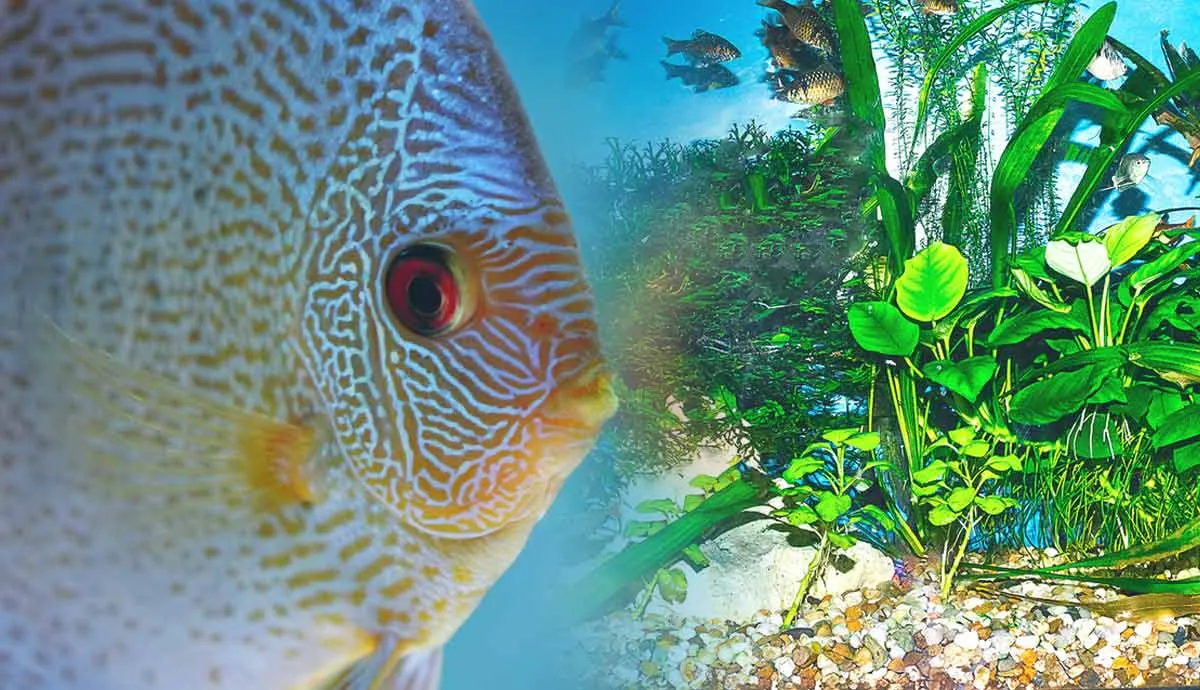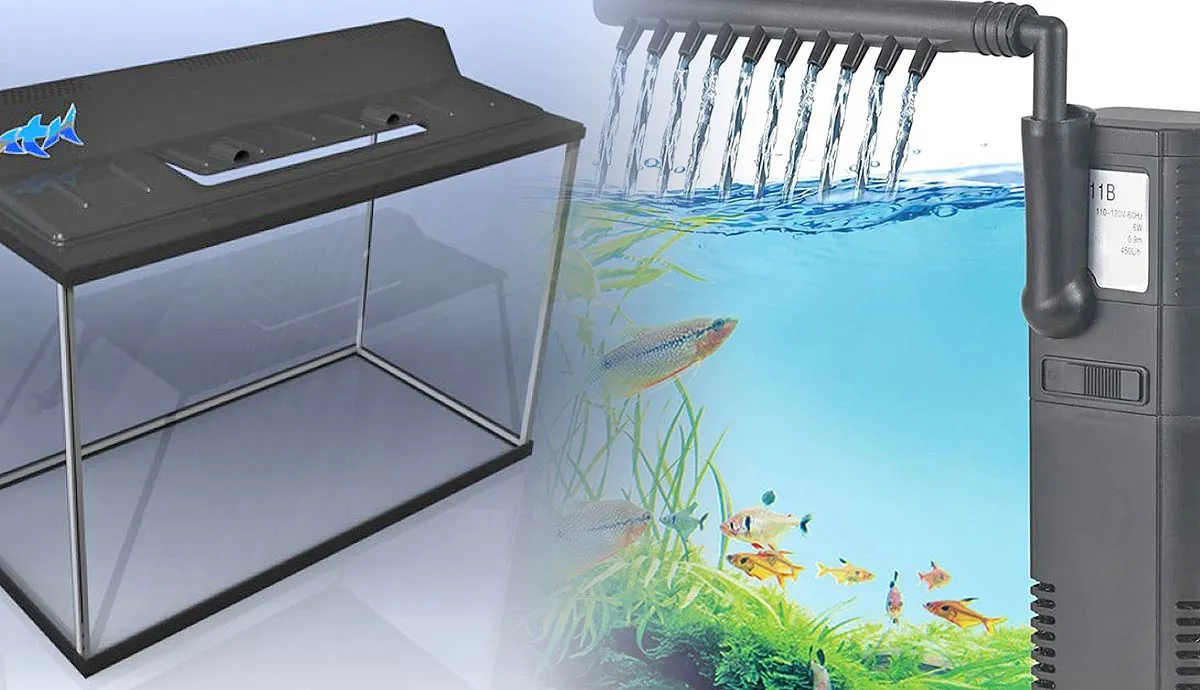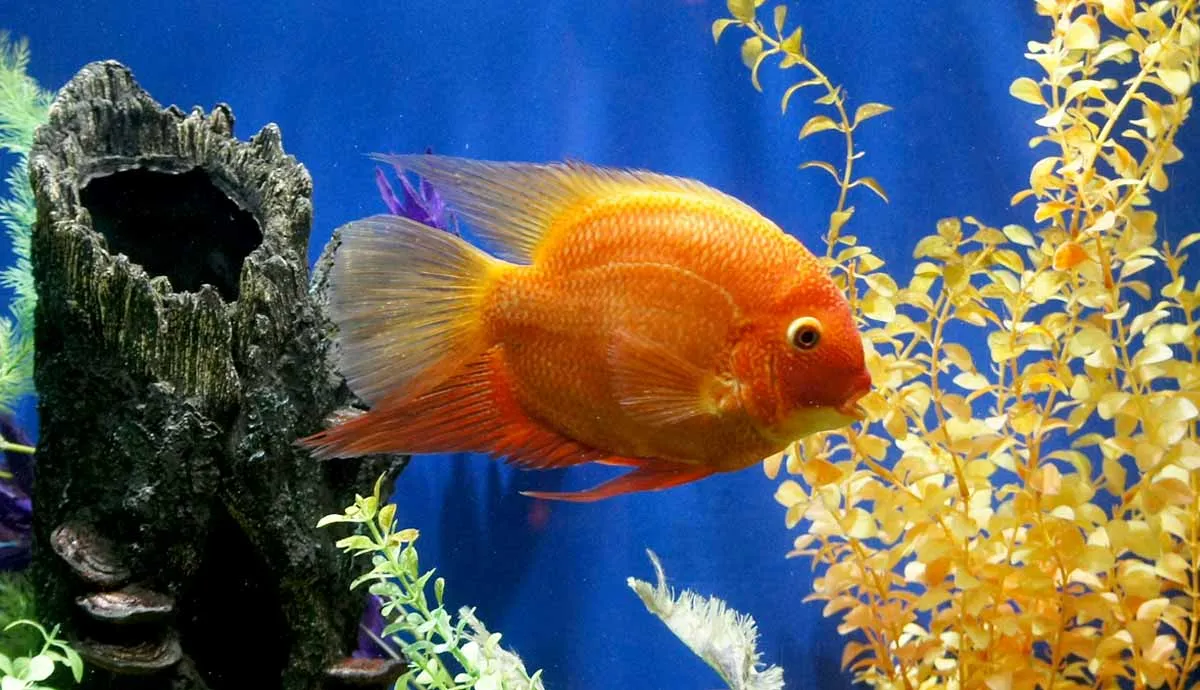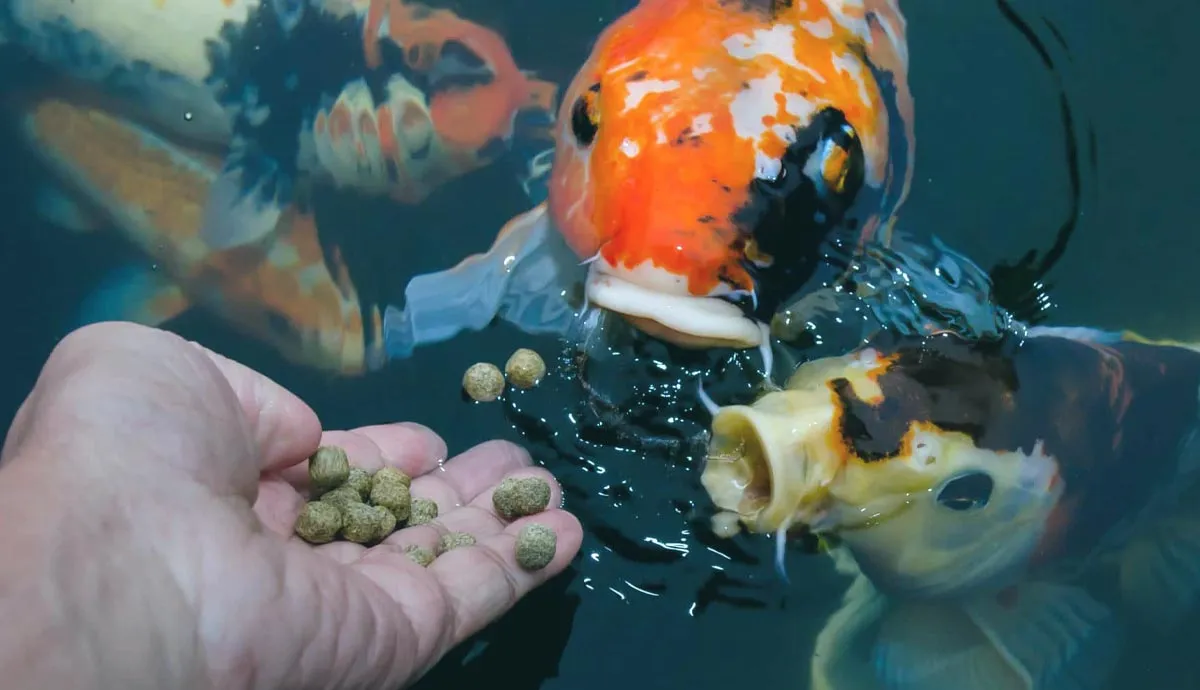Plants add a dash of magic to a fish tank. Creating a visually appealing fish tank is a fun and rewarding hobby that can benefit your mental health. As a beginner aquascaper, prioritizing easy-to-care plants for your first foray into creating a fish tank is a good choice.
Benefits of Low Maintenance Aquatic Plants

This article will help you select beautiful plants that require little attention or special care. Low-maintenance aquatic plants tend to be relatively slow-growing. They are hardy, do well in low-tech tanks, and aren’t bothered by low-light conditions. In other words, they’re not easy to kill and will fit in with busy lifestyles!
In addition to the information you will find in this article, you can also find a handy list of YouTube fish Owners to follow for some fish related inspiration! And if you’re wondering what fish to choose for your tank, check out these 5 Best Fish Breeds For First-Time Owners.
But for now, let's dig into some low-maintenance aquatic plants to get you started on your underwater garden.
1. Elevate Your Tank with Java Fern’s Low-Key Charm
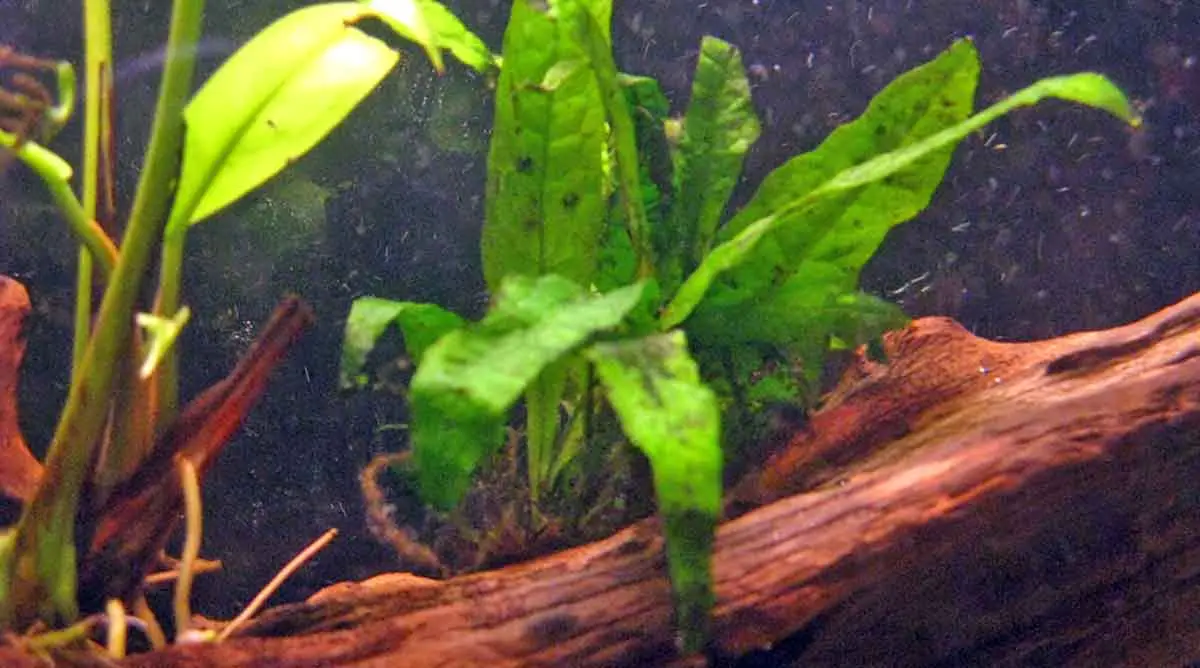
Graceful and elegant Java Fern makes a fantastic addition to a fish tank. It has vibrant green, elongated leaves and looks impressive, flowing in your tank's water. The plant is native to Southeast Asia, and you can choose from several species.
Consider the Windelov Java Fern with its attractive lace-like leaves, the Needle leaf Java Fern with its elegant, slender leaves, or the Trident Java Fern with its distinctive prong-shaped leaves. Overall, Java Fern is an excellent choice for a beginner as the plant is hardy, slow-growing, and doesn’t need much light to thrive. Generally, it likes to be left to its own devices once established.
Java Fern is an epiphytic plant. This means it doesn’t root in the substrate of a fish tank (the material at the bottom of your tank). Instead, it attaches itself via its rhizome to a plant or structure. The rhizome is a thick, horizontal stem. The leaves grow out of the rhizome upwards, and the roots grow down from the rhizome.
To plant your Java Fern, attach it to something in your tank, but leave the rhizome exposed, or it may start to rot. You can use fish tank-friendly glue or thread (like a piece of fishing line or black thread) to tie your fern to rocks, driftwood, or other structures in the tank.
2. Choose Beautiful Bucephalandra Plants
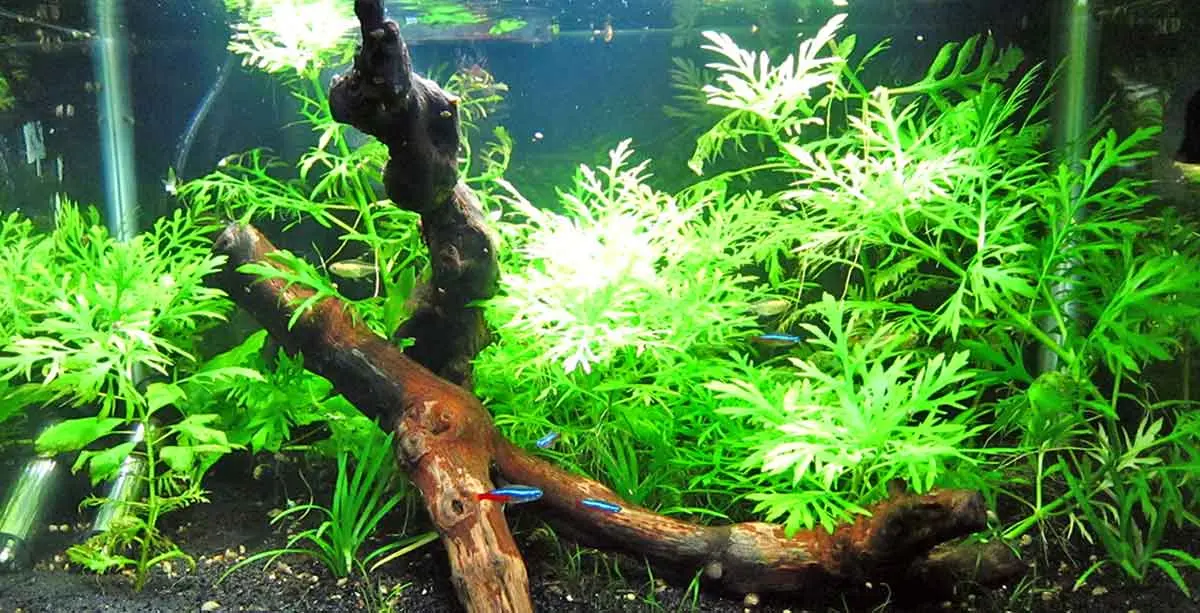
Bucephalandra plants are popular aquatic plants coveted by many fish tank enthusiasts. There are many varieties, and their colors range from vibrant greens to warm reddish browns or striking purple.
Native to Borneo, their leaves often have almost iridescent highlights due to their glossy sheen. They are slow-growing plants and grow in the wild on the banks of streams. Once established, they are hardy, attractive, and do well in low to medium light—a perfect low-maintenance choice for a tank.
Like the Java Fern, Bucephalandra plants have a rhizome, so they don’t need to be planted in the tank substrate. When putting your new Buce plants into your tank, leave the rhizome exposed. Also, as Buce Plants come from fast-moving steams, they like to have water movement inside a tank. They don’t require added CO2, but it can help speed up plant growth if that’s what you want.
When buying Bucephalandra plants, pay attention to where they are sourced. As slow-growing plants endemic to Borneo, illegal harvesting is a problem. You can limit your environmental impact by buying commercially farmed Bucephalandra.
3. Discover The Joy of Colourful Cryptocaryon Plants
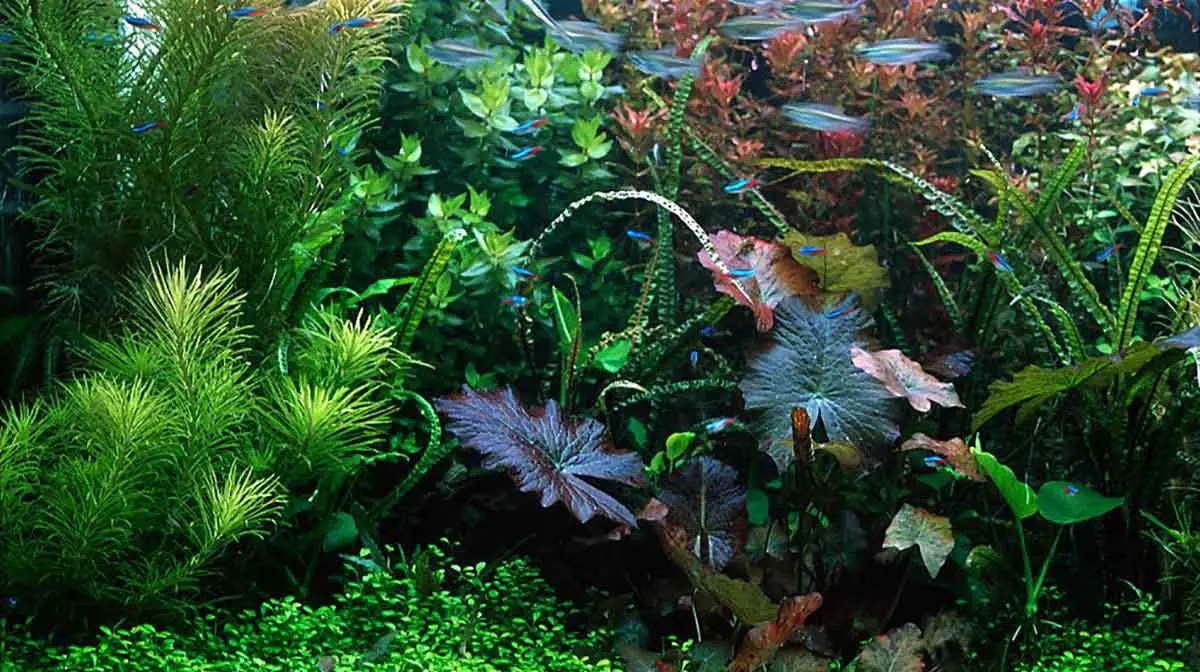
Cryptocoryne plants are hardy and require medium to low light levels and minimal pruning, making them perfect for beginners and low-tech tanks. There are a wide variety of Cryptocoryne plants to choose from.
Popular varieties include Cryptocoryne Wendtii, which comes in various colors, from lush greens to red-ish bronze varieties. Cryptocoryne Lucens is known for being resilient and can provide an attractive green carpet for tanks. One of my favorites is the stunning Cryptocoryne Flamingo with its ruffled leaves and pink tones.
Cryptocoryne plants absorb nutrients through their roots, so it's recommended to plant them in a nutrient-rich substrate or give them root tabs if you are using sand or gravel. They also don’t really like to be moved once established. And beware of the crypto melt!
Cryptocoryne plants are prone to melt, which is especially disconcerting for beginners. Aquatic plants are often grown commercially outside water due to ease. When you first plant them in a fish tank, they need to adapt to underwater life. The plant's leaves will die off (melt!) and be slowly replaced by new leaves, so give them time to adjust after you have first planted them, and don’t press the panic button straight away!
4. Lush Greenery Of Aquatic Moss
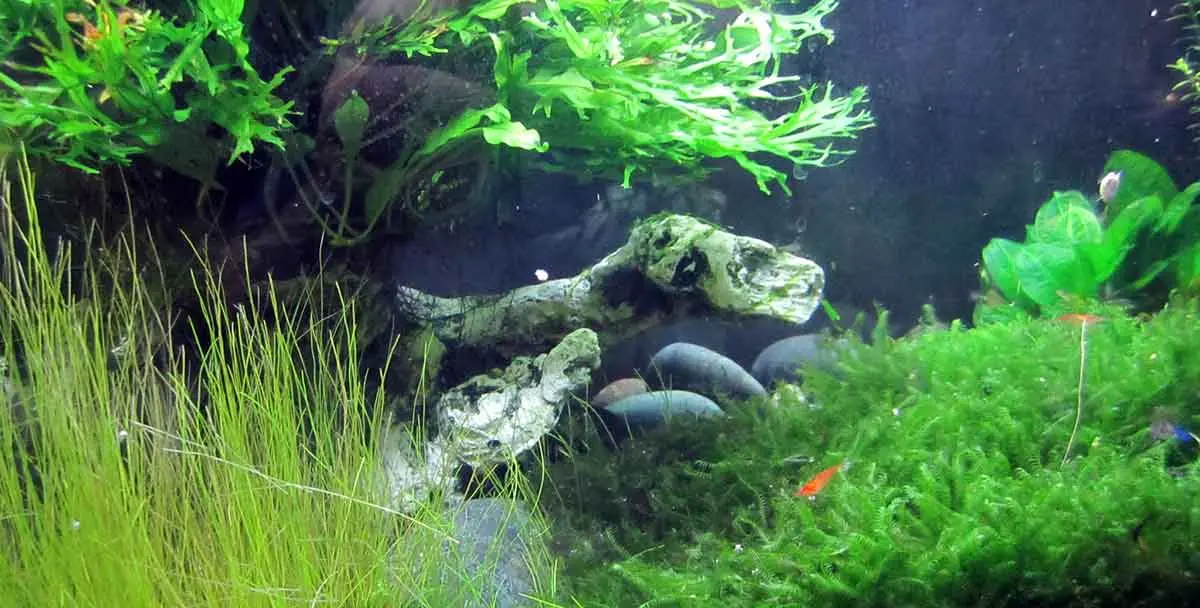
Humble aquatic moss makes a fantastic addition to a fish tank. It gives cover for smaller fish, and its vibrant green gives your tank a lush, natural feel. Moss also provides a stunning visual accent to other plants.
One of the easiest mosses for beginners is Java Moss. It's widely used and readily available. In aquatic circles, it is regarded as indestructible. Native to Southeast Asia, Java Moss doesn’t require a substrate to grow and attaches itself to all manner of things, providing an attractive visual element to pieces of driftwood or other structures in your tank.
One thing to note is that once Java Moss is inside your tank, it can be challenging to get rid of. When scooping it out, little bits can easily break off and find a new home inside your tank. Java moss will attach itself to literally anything! If it comes in a big clump, simply pull it apart and attach it where you want it to grow. It is easiest to secure with thread.
Final Thoughts
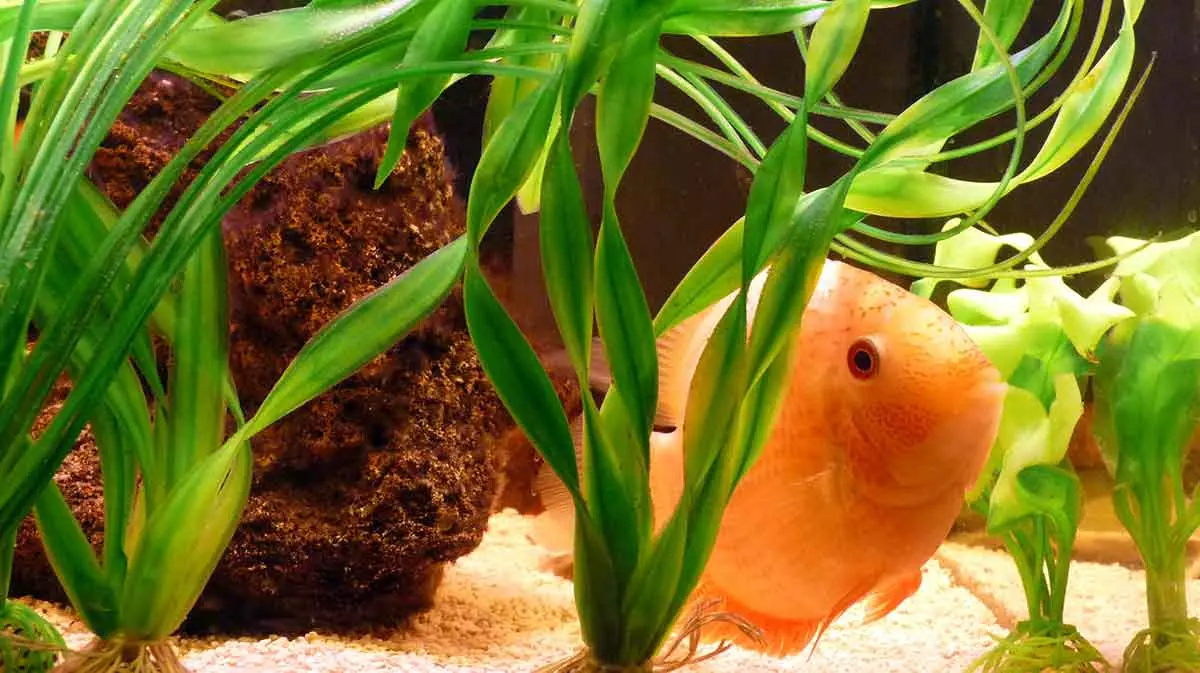
Creating a fish tank is a rewarding hobby and will make a stunning focal point in your home. By adding easy-to-care-for aquatic plants, you can create a gorgeous underwater landscape.
Also, fish are low-maintenance pets that can add a bit of joy to your life. If you need more convincing, here are seven reasons fish make fantastic pets.


